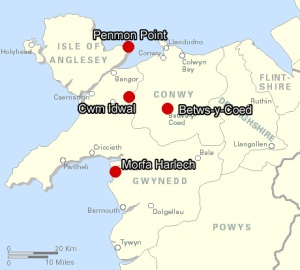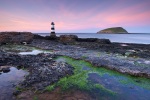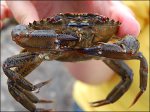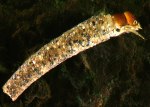Over 6th July 21 AS/A2 Biology students (and Dr Paul and I) set off to Snowdonia to study ecology as part of the A2 Biology course.
Staying at a Field Studies Council centre in Betws-y-coed, the first evening began with setting Longworth mammal traps (non-lethal) so that we could get an estimate of the population of small mammals in the centre grounds. After dinner we had a bonfire and a game of football on a pretty muddy pitch (it had rained most of the day whilst we travelled) but it was good fun.
The following day we checked our mammal traps before breakfast. Another school had also set mammal traps but they hadn’t gone to such great lengths to conceal them and subsequently the squirrels had raided the traps and eaten all the bait.
Our traps however were untouched, and yielded 4 wood mice and 3 bank voles.
After letting them go we travelled by coach to Morfa Harlech, a nature reserve with a textbook-quality sand dune system. Walking across the dunes from the sea towards the land allowed us to record the changes in plant and animals species and the local environment, highlighting the process of succession. At the end of the dune system is woodland that was once bare sand but over time has been colonised by successive plant communities.
That evening the students worked in the classroom to process their results, and then we played another game of football.
Sunday saw us travelling to Penmon Point on Anglesey to study a rocky shore.
Starting at the low water mark we moved higher above sea level, recording the changes in types of seaweed and plants, limpets, barnacles and crabs.
Rocky shores exhibit something called ‘zonation’ – the distribution of the different organisms is heavily influenced by different local environmental conditions.
On the return from Penmon Point we stopped off briefly at Cwm Idwal, a spectacular corrie (bowl-shaped glacial valley) formed by over 2 million years of glaciation.
The glacier is long since gone, although it has left a crystal-clear lake in its place. Cwm Idwal is special for many reasons, but particularly since it is home to the incredibly rare Welsh Tufted Saxifrage, an alpine plant that is a leftover from the time when Britain was much colder just after the last ice age.
The plant clings on to life on the cold backwall of the valley where few other plants can survive.
That evening didn’t see any football – instead the students dressed up as pirates and took part in a treasure hunt and then a piratey sing-song around a roaring fire!
Monday was our last day, but the morning was spent collecting invertebrates from a fast-flowing freshwater stream and then looking for a correlation between the different species and the velocity of the water.
After that, we travelled by train back to London – rather tired but having had a really good trip. The students were amazing – they worked so hard, got really enthusiastic about everything and were a credit to themselves. Well done!










